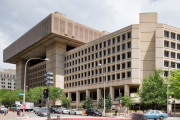Haley Sittner was providing some TLC to her then 16-month-old son, Henry, who had a cold caused by a viral infection with fever, when she drifted off to sleep with him in her arms. She was awoken by his convulsions.
“His eyes had rolled back in his head and his body was shaking uncontrollably. I called out his name repeatedly, but he did not respond,” Sittner says. “It was very frightening.” Fortunately, as a physician assistant in the neurology department at Seattle Children’s Hospital, she knew precisely what was happening — Henry was having a febrile seizure — and what to do.
[See: Was that a Seizure?]
What Are Febrile Seizures?
Resulting from a fever of greater than 100.4 degrees, febrile seizures occur in children between the ages of 3 months and 6 years. Children between 12 and 18 months who have a fever exceeding 102 degrees are most commonly affected.
Febrile seizures often occur early on in the course of the illness and despite treatment. Sittner had been treating Henry with Tylenol and ibuprofen to manage his fever at the time of his febrile seizure. “They’re pretty common — about 1 in 25 children will have one,” says Dr. Paul Graham Fisher, a professor of neurology at Stanford University, who was on an American Academy of Pediatrics’ subcommittee that wrote the organization’s febrile seizure guidelines.
Though figures vary, it’s estimated that between 2 and 4 percent of young children will have a febrile seizure. “The best data seem to say it’s about 4 percent of the population,” Fisher says. The good news is that the seizures are typically benign — they’ve not been shown to have lasting health effects, including on a child’s brain development. But the occurrence can be quite scary, and parents should take steps to ensure their child is safe and receives prompt medical attention to determine and address the underlying cause of the fever. “Easier said than done, but rule No. 1 is remain calm,” Fisher says.
Don’t try to control the child’s convulsions, but instead ensure the child is in a safe place where he or she can’t flail and hit furniture; move toys out of the way as well, says Dr. Stephanie Randle, a pediatric neurologist at Seattle Children’s Hospital. Do not try to put anything in the child’s mouth — your hand or medicine included — during the seizure. Though the child may bite their tongue, they will not swallow their tongue — an old wives’ tale, Randle notes.
Lay the child on his or her side so any fluid or vomit would come out of the child’s mouth, says Dr. John Millichap, a pediatric epileptologist who specializes in the treatment of seizures at Ann and Robert H. Lurie Children’s Hospital of Chicago. Experts advise seeking immediate medical attention. Call 911 for emergency assistance particularly if the seizure lasts more than about 4 or 5 minutes, if a child looks like he or she isn’t breathing, you feel uncomfortable handling the child or fear the child’s health is in danger. Usually the seizure will resolve on its own, but less commonly, for prolonged seizures medical providers may administer anti-seizure medications.
It’s also important for parents to keep an eye on the clock, and the duration of the seizure, so they can tell clinicians how long the seizure lasted. Though children lose consciousness, their eyes typically remain open while they’re having a seizure. “Most seizures end with closure of the eyes, and often with a deep breath as well — so making sure that the seizure has ended is an important factor,” Millichap says.
It’s also key, clinicians say, that a child receives immediate medical attention — such as from the child’s doctor or an emergency room physician — to determine the underlying cause of the fever. Viral or bacterial infections, like those involved in a routine ear infection, are frequently the cause. In some cases, fever may occur as a side effect after certain vaccines are administered, like the measles mumps rubella, or MMR, vaccination. And in rare instances, a more serious underlying issue — such as meningitis or a brain infection — may be causing the fever.
[See: 10 Concerns Parents Have About Their Kids’ Health.]
What Does This Mean for My Child’s Health Overall?
Febrile seizures are typically broken into two categories: simple and complex. Most children have a simple febrile seizure. These commonly last just a minute or two and don’t extend more than 15 minutes; the seizure is generalized — involving both sides of the body — and the child only has one seizure within a 24-hour period. “Anything else is referred to as a complex febrile seizure — so complicating features are lasting more than 15 minutes, and involving one side of the body or staring, which would indicate a focal onset … and occurring more than once in a 24-hour period,” Millichap explains.
“Most complex febrile seizures are referred to a neurologist for further evaluation,” he says. In about two-thirds of cases, children who have a febrile seizure will not have another one. But approximately 30 to 35 percent do have recurrent seizures, as noted in a febrile seizures patient education resource for clinicians that Millichap helped write for UpToDate, a company that provides evidenced-based, doctor-authored resources to health providers. Experts say a recurrent febrile seizure isn’t in itself cause for concern. However, if it meets the definition of a complex febrile seizure, or particularly if a child begins having seizures without a fever, he or she should be seen by a neurologist. The specialist can investigate if a child may have a neurological issue, like epilepsy, which is marked by recurrent seizures that are “unprovoked,” or not caused by an acute symptom like fever.
A family history of febrile seizures can increase the risk a child will have a febrile seizure. But even for children who have a complex febrile seizure, experts say their risk of epilepsy is only slightly higher than other kids who haven’t had a febrile seizure. “By in large, it’s a self-limited event, or some of the kids have a few more [febrile seizures] in their lifetime,” Fisher says. Experts say the vast majority don’t go on to develop seizures without fevers or epilepsy.
Could I Prevent Another Febrile Seizure?
Though parents are encouraged to manage fevers for the child’s comfort and in accordance with the recommendations of a child’s doctor, clinicians discourage being overly aggressive with medication to try to prevent a febrile seizure.
In most cases, treatment with anti-seizure medications isn’t indicated. Doctors recommend against giving children more medication, such as Tylenol or Motrin, in an attempt to prevent fever or a febrile seizure. Millichap notes that research doesn’t support such preventive measures. “It doesn’t seem to reduce the risk of febrile seizures,” he says.
[See: How to Promote Safe Sleep for Your Infant.]
Parents can rest assured that even in cases where a child experiences more than one febrile seizure, it’s typically benign — with no long-term health implications, Fisher says. Sittner says Henry, who is now 4, hasn’t had any seizures since the one he had at 16 months; as recommended, he received immediate medical attention, and his fever was managed with medication. “Henry’s seizure lasted a minute, but felt like a lifetime,” she says. “I felt comforted knowing that children who have febrile seizures are developmentally healthy with a low risk of developing a seizure disorder later in life.”
More from U.S. News
10 of the Biggest Health Threats Facing Your Kids This School Year
These Medicines May Cause Bone Loss
What Parents Should Know About Febrile Seizures originally appeared on usnews.com







